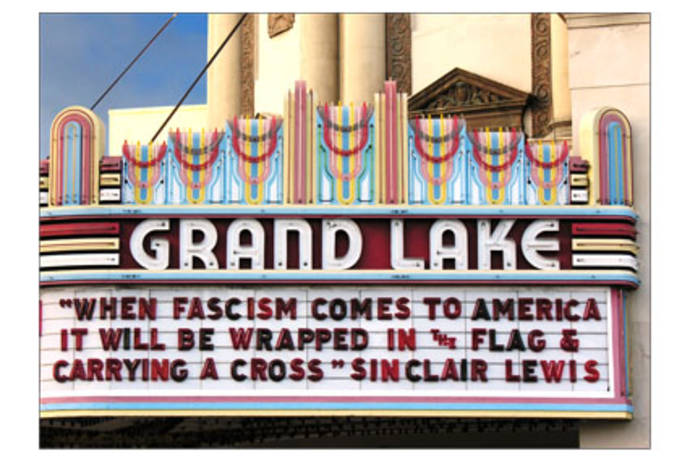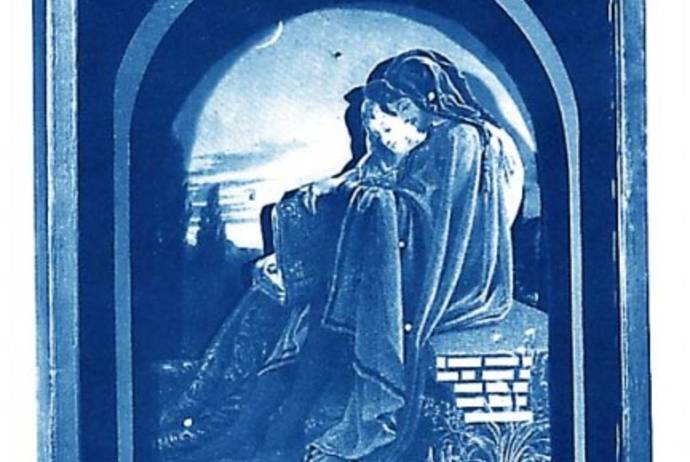

Antonio Gramsci—son of Sardinia, co-founder of the Italian Communist Party and L’Unita, intellectual—was born January 22, 1891. His life ended prematurely, after spending over a decade in a Fascist prison, incarcerated by his former Socialist Party comrade Benito Mussolini.
His letters from prison—not just the fierce political analyses, but the fluffier personal notes too —fascinate me. There’s something fitting, I think, in using cyberspace to write about Gramsci, whose fame comes in large part from the writing he produced behind bars, under strict censorship. I think Gramsci would have marveled at the possibilities afforded by cyberspace (although I should add that I’m posting this on the 22nd here in California, while here at i-Italy it’s already the 23rd). I understand that the Internet is hardly a free, unmonitored, perfectly democratic space, but it surely grants more freedom of expression than il Duce’s lockup.
Gramsci was well aware of this intellectual repression. In writing to his wife, Julia Schucht, he reminded her: "le mie lettere sono ‘pubbliche,’ non riservate a noi due” (“my letters are ‘public,’ not reserved for us two’) (December 7, 1931). I can’t help but think of electronic messages—emails, text messages, you name it. And while I certainly don’t want to sound like I’m waxing nostalgic for the long-lost days of pen, paper, and envelope, I wonder sometimes what will happen to all the text we produce online. Whose i-Italy blog posts will still be around in a hundred years? Will they have been collected in a multivolume set: Italian American Bloggers, The First Wave? What about all of the emails we write? Will we have cyber Eloise and Abelard that university students will read in their “Great Texts of the Twenty-first Century” course?
Yet I also can’t help but chuckle—because I feel for him, I sympathize—when I read Gramsci, a serious thinker I admire, bothered by his own sometimes-unintelligible prose: to Julia, he writes, “se dovessi io stesso rileggere le mie lettere dopo qualche settimana, mi pare che ne proverei un certo disgusto” (“if I were to re-read my letters after a few weeks I think I would find them a bit distasteful”) (November 30, 1931). Would he have written differently if he knew his letters would be published in books, cited at conferences, taught in universities, and posted online?

I always like to walk through the San Francisco MOMA’s permanent photography exhibit when I'm there. Most recently I stopped by hoping to see one or two Tina Modotti pieces, since the museum owns a number of good ones. They didn't have any of her work up this time (Modotti will crop up again in my posts, I'm certain), but I stumbled on quite a crowd at the Joseph Cornell exhibit, in its last day.


The revolutionary communist poet Peppino Marotto was killed last Saturday, December 29, in the town of Orgosolo (province of Nuoro, Sardinia). Marotto, 82, was killed by a still-unknown assailant with six shots while he was going to buy a newspaper. Marotto was perhaps best known for his poems, often put to music, in honor of another Sardinian, Antonio Gramsci. It is through Gramsci scholars, particularly groups like the International Gramsci Society, that much of Marotto's work circulates.

Already leftist academic circles have begun to eulogize his life and commitment to radical political and social change. For instance, the newly-founded TERRA GRAMSCI, organized in part by historian Eric Hobsbawm and artist Maria Lai, will act in his memory. TERRA GRAMSCI is an international effort to keep Gramsci’s work alive in relation to and beyond his native Sardinia. As the organizers explain, the project “nasce allo scopo di mantenere viva la memoria e la presenza della personalità, dell'opera e dell'immagine di Antonio Gramsci in Sardegna, con un'attenzione particolare nei territori del Centro dell'Isola, in contrappunto con la conoscenza e la diffusione del pensiero di Gramsci nel 'mondo grande terribile complicato'." Here's hoping for a more peaceful 2008 in Sardinia and beyond.